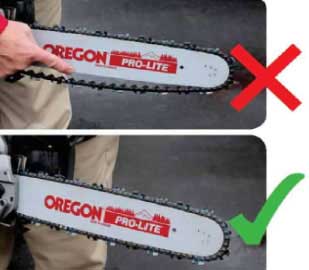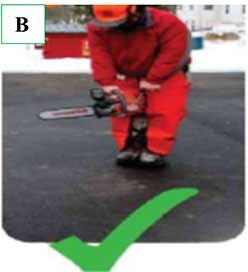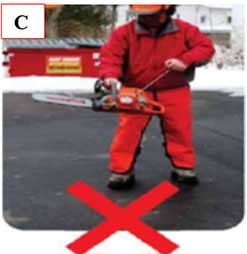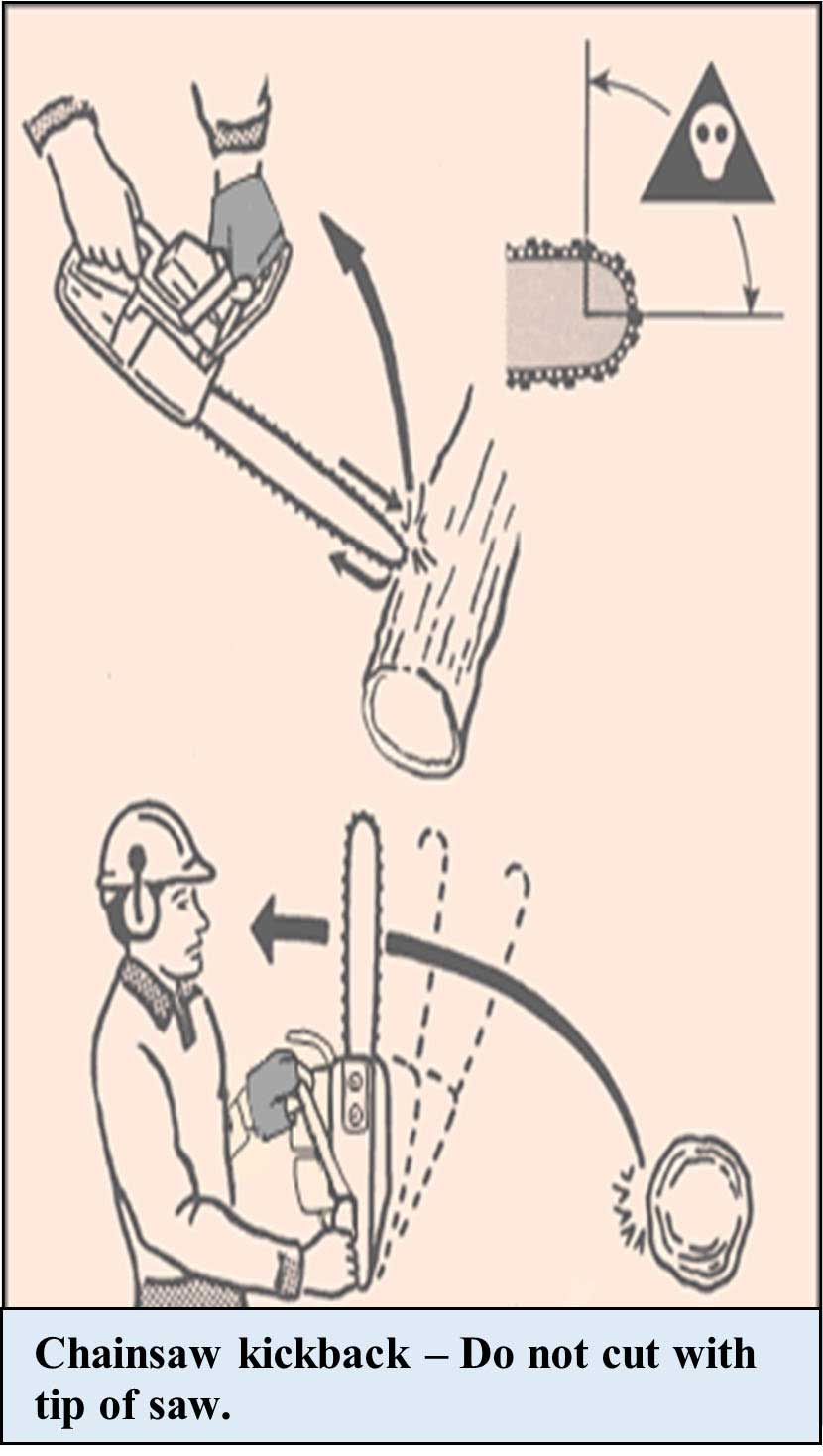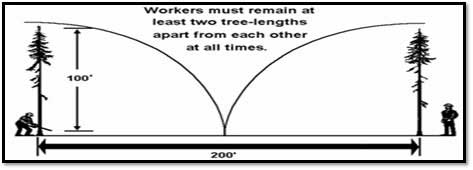Chainsaw Safety Toolbox Talk
Chainsaw Safety
Each year, according to the Centers for Disease Control and Prevention (CDC), approximately 36,000 people are treated in the emergency room for injuries from using chainsaws. Cuts, kickback, and flying debris are potential hazards that can lead to accidents involving chainsaws. These risks can be minimized by using proper personal protective equipment and safe operating procedures.
Training
Operators should receive training from their supervisor on each type of chainsaw they are tasked to operate. Prior to operating the equipment for the first time, the operator should review the Operator's Manual to familiarize themselves with the inspection requirements and operating procedures. The operators should also familiarize themselves with the chainsaw’s controls and safety decals.
Preparing for safe operation
- Inspect your equipment prior to and periodically throughout chainsaw operations:
- Check the controls, the chain tension, the chain brake, the bolts, and both handles on the chainsaw to make sure that they are functioning properly.
- Make sure chain lubrication device/oiler is functioning properly before any cutting. Failure to do so can cause overheating of chain and bar causing warping of the bar and chain track which could lead to seizing or breaking of chain.
- Make sure the clutch cover is not broken or exposing the chain or sprocket.
- Ensure that the chain is properly sharpened and free of sawdust, dirt and oil excess.
- Use Personal Protective Equipment:
- Wear hard hat, safety glasses, face shield, hearing protection, safety gloves, chainsaw chaps and safety shoes. High-visibility vest is required when working on or near roadways.
Safe operating procedures
- Clear the area of obstacles that might interfere with cutting the tree or brush.
- Look for nails, spikes or other metal in the tree before cutting.
- Look up before cutting trees. Loose limbs in the tree may fall.
- Start the saw on a safe position with chain brake engaged, and at least 10 feet from fueling area.
- A safe starting position is braced on the ground (Figure A) or braced against your legs (Figure B). The preferred one is on the floor, but if there is nowhere suitable to place it, holding it tightly between your legs is also acceptable.
- Do not "drop start". A drop start is where you hold the chainsaw in one hand and pull the starter rope with the other (Figure C). This method leaves only one hand to control a running saw and can result in serious injury.
| Figure A | Figure B | Figure C |
|---|---|---|
- Keep hands on the handles and have secure footing while operating the chainsaw.
- Proper hand position requires the left hand on the front handle, with the right hand on the rear handle.
- Stand to the side of cutting path.
- Do not leave a chainsaw running unattended.
- Proper hand position requires the left hand on the front handle, with the right hand on the rear handle.
- Avoiding chainsaw kickback:
- Do not cut with tip of saw; keep track of where tip is.
- Do not cut directly overhead or between legs.
- Use devices such as low kickback chain and reduced kickback guide bars that reduce the risks associated with kickback.
- Cut only with the chain moving at full speed. If the chain becomes bound between the wood, there is a greater chance for kickback to occur.
- Cut a single piece at a time and only re-enter a previous cut only if necessary.
- Do not start the chainsaw when the bar is in contact with wood.
- Shut off or apply chain brake when carrying the chainsaw.
- Carry the chainsaw by its front handle, with the muffler away from your body and the guard bar pointing behind you.
- Do not carry the saw on your shoulder. If you fall, the blade is next to your neck.
- Communicate with and watch out for co-workers.
- Always know the location of the persons working with you.
- Work at a safe distance from other workers (twice the height of the trees being felled).
-
Fuel handling safety (if applicable): Gasoline is an extremely flammable fuel and can ignite easily.
- Only use OSHA/DOT approved cans for transporting fuel to the chainsaw.
- Dispense fuel at least 10 feet away from any sources of ignition.
- No smoking during fueling.
- Use a funnel or a flexible hose when pouring fuel into the chainsaw.
- Never attempt to fuel a running or hot chainsaw.


